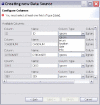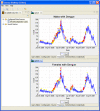Developing open source, self-contained disease surveillance software applications for use in resource-limited settings
- PMID: 22950686
- PMCID: PMC3458896
- DOI: 10.1186/1472-6947-12-99
Developing open source, self-contained disease surveillance software applications for use in resource-limited settings
Abstract
Background: Emerging public health threats often originate in resource-limited countries. In recognition of this fact, the World Health Organization issued revised International Health Regulations in 2005, which call for significantly increased reporting and response capabilities for all signatory nations. Electronic biosurveillance systems can improve the timeliness of public health data collection, aid in the early detection of and response to disease outbreaks, and enhance situational awareness.
Methods: As components of its Suite for Automated Global bioSurveillance (SAGES) program, The Johns Hopkins University Applied Physics Laboratory developed two open-source, electronic biosurveillance systems for use in resource-limited settings. OpenESSENCE provides web-based data entry, analysis, and reporting. ESSENCE Desktop Edition provides similar capabilities for settings without internet access. Both systems may be configured to collect data using locally available cell phone technologies.
Results: ESSENCE Desktop Edition has been deployed for two years in the Republic of the Philippines. Local health clinics have rapidly adopted the new technology to provide daily reporting, thus eliminating the two-to-three week data lag of the previous paper-based system.
Conclusions: OpenESSENCE and ESSENCE Desktop Edition are two open-source software products with the capability of significantly improving disease surveillance in a wide range of resource-limited settings. These products, and other emerging surveillance technologies, can assist resource-limited countries compliance with the revised International Health Regulations.
Figures













References
-
- Katz RL, Gornto SE, Chretien JP. Expert opinion on implementation strategies for the International Health Regulations (2005) World Med Health Policy. 2011;3(3) doi: 10.2202/1948-4682.1178. - DOI
-
- World Health Organization (WHO) International Health Regulations. 2. 2005. http://whqlibdoc.who.int/publications/2008/9789241580410_eng.pdf Accessed 25 April 2012.
-
- Fraser H, Biondich P, Moodley D, Choi S, Mamlin B, Szolovits P. Implementing electronic medical record systems in developing countries. Inform Prim Care. 2005;13:83–95. - PubMed
Publication types
MeSH terms
LinkOut - more resources
Full Text Sources
Research Materials
Miscellaneous

